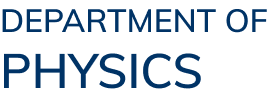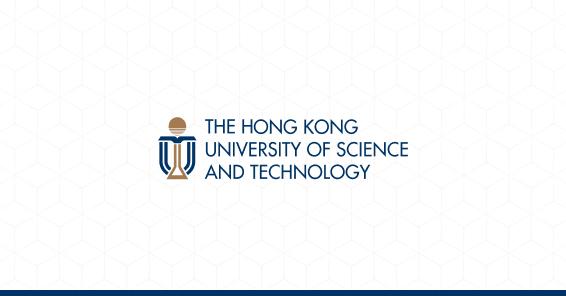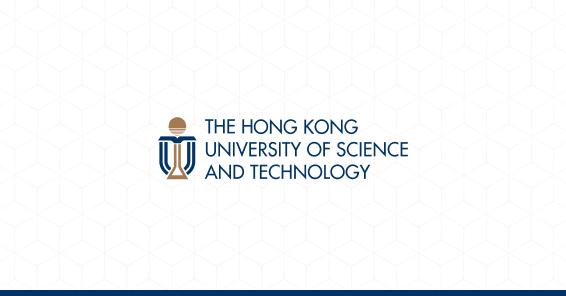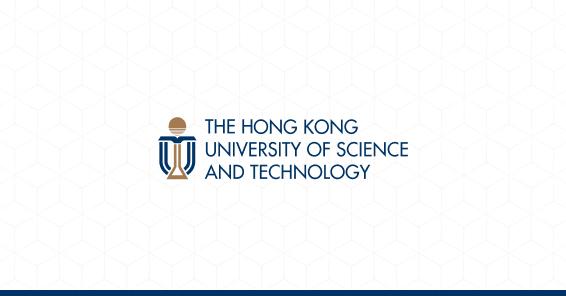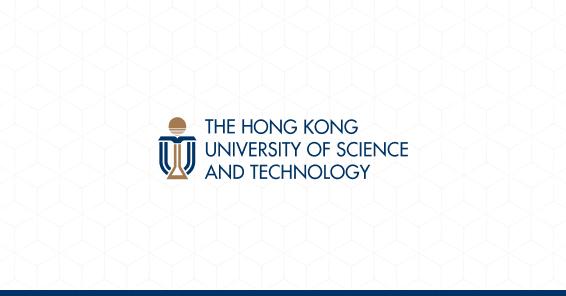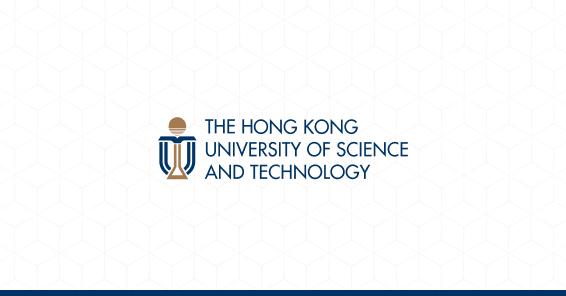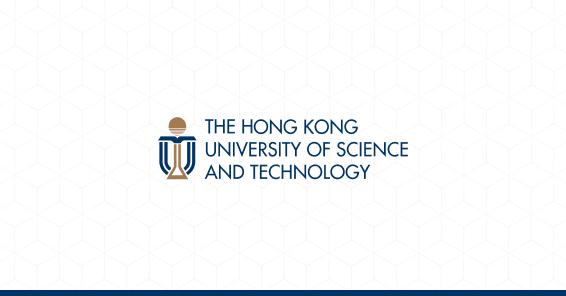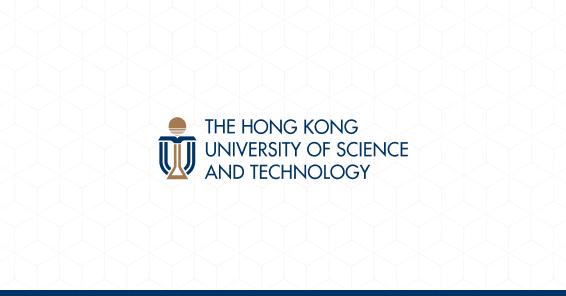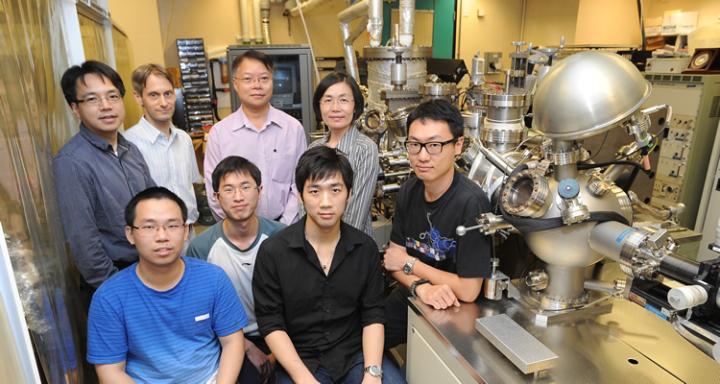News & Events
2015-09-16
The Hong Kong University of Science and Technology (HKUST) hosted the first talk of its 25th Anniversary Distinguished Speakers Series yesterday, featuring Prof Steven Chu, Nobel Laureate in Physics in 1997 and former US Secretary of Energy. The event was well received by students, faculty members and guests from HKUST.
Speaking on “Energy, Climate Change and the Transition to a Sustainable World”, Prof Chu warned of the impact of climate change on our generations to come. Backing up with statistics and lively examples, he talked about how renewable energy could provide sufficient energy to a greater population. In order to make the most out of it, Prof Chu noted, a very flexible transmission and distribution system will be required, and that adaptation costs will go down as more parts of the world get used to renewable energy. “Climate of the earth is indeed changing, and we have very compelling evidence that said it is largely caused by greenhouse gases by humans,” Prof Chu said as he reinstated the need for cleaner energy. An established physicist and a champion in clean energy, Prof Chu co-won the Nobel Prize in Physics in 1997 for a method to cool and trap atoms along with his colleagues Claude Cohen-Tannoudji and William Daniel Philips. He joined US President Barack Obama’s administration as the nation’s Secretary of Energy in 2009, during his tenure he oversaw a tenfold increase in solar energy use and an overall doubling in the use of renewable energy, leading to a cut in fossil fuel consumption. Prof Chu had recruited outstanding scientists and engineers into the Department of Energy, he also began several initiatives including ARPA-E (Advanced Research Projects Agency – Energy), the Energy Innovation Hubs and the U.S. – China Clean Energy Research Centers (CERC). After leaving the public office in 2013, Prof Chu returned to Stanford University and lead researchers in developing accurate, informative and broadly applicable tools for biophysics and biomedicine. Prof Chu is among five other Nobel Prize winners, corporate leaders, entrepreneurs and key financial policy shapers invited to speak for the Series that marks HKUST’s 25th anniversary. Other confirmed speakers include Wang Shi, Founder and Chairman of leading property developer China Vanke, winner of Nobel Prize in Chemistry in 2011 Prof Dan Shechtman, and Dr Raghuram Govind Rajan, Governor of the Reserve Bank of India. Jean-Pascal Tricoire, Chairman and Chief Executive Officer of Schneider Electric, will be the next speaker for the Series, and he will talk about the new energy world on September 23, 2015. More talks by other distinguished speakers are also being lined up. Read more
Speaking on “Energy, Climate Change and the Transition to a Sustainable World”, Prof Chu warned of the impact of climate change on our generations to come. Backing up with statistics and lively examples, he talked about how renewable energy could provide sufficient energy to a greater population. In order to make the most out of it, Prof Chu noted, a very flexible transmission and distribution system will be required, and that adaptation costs will go down as more parts of the world get used to renewable energy. “Climate of the earth is indeed changing, and we have very compelling evidence that said it is largely caused by greenhouse gases by humans,” Prof Chu said as he reinstated the need for cleaner energy. An established physicist and a champion in clean energy, Prof Chu co-won the Nobel Prize in Physics in 1997 for a method to cool and trap atoms along with his colleagues Claude Cohen-Tannoudji and William Daniel Philips. He joined US President Barack Obama’s administration as the nation’s Secretary of Energy in 2009, during his tenure he oversaw a tenfold increase in solar energy use and an overall doubling in the use of renewable energy, leading to a cut in fossil fuel consumption. Prof Chu had recruited outstanding scientists and engineers into the Department of Energy, he also began several initiatives including ARPA-E (Advanced Research Projects Agency – Energy), the Energy Innovation Hubs and the U.S. – China Clean Energy Research Centers (CERC). After leaving the public office in 2013, Prof Chu returned to Stanford University and lead researchers in developing accurate, informative and broadly applicable tools for biophysics and biomedicine. Prof Chu is among five other Nobel Prize winners, corporate leaders, entrepreneurs and key financial policy shapers invited to speak for the Series that marks HKUST’s 25th anniversary. Other confirmed speakers include Wang Shi, Founder and Chairman of leading property developer China Vanke, winner of Nobel Prize in Chemistry in 2011 Prof Dan Shechtman, and Dr Raghuram Govind Rajan, Governor of the Reserve Bank of India. Jean-Pascal Tricoire, Chairman and Chief Executive Officer of Schneider Electric, will be the next speaker for the Series, and he will talk about the new energy world on September 23, 2015. More talks by other distinguished speakers are also being lined up. Read more
2015-09-09
The Hong Kong University of Science and Technology (HKUST) is set to launch a Distinguished Speakers Series to mark its 25th anniversary. With a mission to advance learning and knowledge, the University has invited leaders and experts from around the globe to share their insights with our faculty, students, staff and local audience.
The series’ inaugural speaker Prof Steven Chu, Nobel Laureate in Physics in 1997 and former US Secretary of Energy, will deliver a speech entitled “Energy, Climate Change and the Transition to a Sustainable World” on September 15, 2015. Another five Nobel Laureates have also accepted invitations to speak in this series, other distinguished speakers include policy shapers, corporate leaders and entrepreneurs who have made changes in their own innovative ways. An established physicist and a champion in clean energy, Prof Chu co-won the Nobel Prize in Physics in 1997 for a method to cool and trap atoms along with his colleagues Claude Cohen-Tannoudji and William Daniel Philips. He joined US President Barack Obama’s administration as the nation’s Secretary of Energy in 2009, during his tenure he oversaw a tenfold increase in solar energy use and an overall doubling in the use of renewable energy, leading to a cut in fossil fuel consumption. Prof Chu had recruited outstanding scientists and engineers into the Department of Energy, he also began several initiatives including ARPA-E (Advanced Research Projects Agency – Energy), the Energy Innovation Hubs and the U.S. – China Clean Energy Research Centers (CERC). After leaving the public office in 2013, Prof Chu returned to Stanford University and lead researchers in developing accurate, informative and broadly applicable tools for biophysics and biomedicine. Exemplifying HKUST’s 25th anniversary slogan “Innovating Today, Imagining Tomorrow”, Prof Chu will talk about how science and technology such as the industrial and agricultural revolutions have transformed the world, he will also share his observations on climate change, the rapidly-changing energy landscape, and how energy efficiency and clean energy sources are becoming the low cost option to our energy needs. Amid the talk, Prof Chu will spend a whole day in the campus meeting students and faculty. Jean-Pascal Tricoire, Chairman and Chief Executive Officer of Schneider Electric, will be the next speaker for the Series, he will talk about the new energy world on September 23, 2015. Other confirmed speakers include Wang Shi, Founder and Chairman of leading property developer China Vanke, Prof Dan Shechtman, winner of Nobel Prize in Chemistry in 2011 and Dr Raghuram Govind Rajan, Governor of the Reserve Bank of India. Read more
The series’ inaugural speaker Prof Steven Chu, Nobel Laureate in Physics in 1997 and former US Secretary of Energy, will deliver a speech entitled “Energy, Climate Change and the Transition to a Sustainable World” on September 15, 2015. Another five Nobel Laureates have also accepted invitations to speak in this series, other distinguished speakers include policy shapers, corporate leaders and entrepreneurs who have made changes in their own innovative ways. An established physicist and a champion in clean energy, Prof Chu co-won the Nobel Prize in Physics in 1997 for a method to cool and trap atoms along with his colleagues Claude Cohen-Tannoudji and William Daniel Philips. He joined US President Barack Obama’s administration as the nation’s Secretary of Energy in 2009, during his tenure he oversaw a tenfold increase in solar energy use and an overall doubling in the use of renewable energy, leading to a cut in fossil fuel consumption. Prof Chu had recruited outstanding scientists and engineers into the Department of Energy, he also began several initiatives including ARPA-E (Advanced Research Projects Agency – Energy), the Energy Innovation Hubs and the U.S. – China Clean Energy Research Centers (CERC). After leaving the public office in 2013, Prof Chu returned to Stanford University and lead researchers in developing accurate, informative and broadly applicable tools for biophysics and biomedicine. Exemplifying HKUST’s 25th anniversary slogan “Innovating Today, Imagining Tomorrow”, Prof Chu will talk about how science and technology such as the industrial and agricultural revolutions have transformed the world, he will also share his observations on climate change, the rapidly-changing energy landscape, and how energy efficiency and clean energy sources are becoming the low cost option to our energy needs. Amid the talk, Prof Chu will spend a whole day in the campus meeting students and faculty. Jean-Pascal Tricoire, Chairman and Chief Executive Officer of Schneider Electric, will be the next speaker for the Series, he will talk about the new energy world on September 23, 2015. Other confirmed speakers include Wang Shi, Founder and Chairman of leading property developer China Vanke, Prof Dan Shechtman, winner of Nobel Prize in Chemistry in 2011 and Dr Raghuram Govind Rajan, Governor of the Reserve Bank of India. Read more
2015-04-14
Dr Tom Hiu Tung Cheung, Assistant Professor of the Division of Life Science, and Dr Kam Tuen Law, Assistant Professor of the Department of Physics at the Hong Kong University of Science and Technology (HKUST) were honored the prestigious Croucher Innovation Awards 2015 by the Croucher Foundation for their distinguished scientific research achievements. Each award carries a value of up to HK $\$5$ million over five years. The presentation ceremony held today was officiated by Mr John Tsang Chun-wah, GBM, JP, Financial Secretary of the HKSAR Government.
Dr Cheung’s main research area focuses on somatic stem cell biology. His laboratory is interested in understanding the molecular regulation of stem cell quiescence and activation and how these signaling pathways play a role in tissue regeneration as well as stem cell ageing. Using skeletal muscle stem cell as a model system, his research team is currently attempting to decipher the molecular pathways that are essential for muscle stem cell function and the regulation of stem cell ageing. The long-term goal of his laboratory is to achieve better understanding of the molecular mechanisms of why tissue regeneration is impaired during ageing and devise therapies for aged-associated diseases using regenerative medicine.
“Better understanding of the process of biological ageing is key to improving health and longevity in modern society. With this generous funding provided by the Croucher Foundation, our research projects aim to provide insights towards translational research that will result in new intervention to ameliorate age-related diseases and therefore will minimize the demand for medical service of our ageing population”, Dr Cheung said.
Dr Cheung received his Bachelor and PhD degree in biochemistry from the University of Colorado at Boulder in 2001 and 2006 respectively. He was awarded the First Generation Scholarship by the University of Coloradoat Boulder in 1998-2001 and the National Heart, Lung and Blood Institute Pre-doctoral Fellowship by National Institutes of Health in the United States in 2003-2006. Since 2006, Dr Cheung has been a postdoctoral fellow in the Department of Neurology and Neurological Sciences of School of Medicine at Stanford University, where his research area was focused on somatic stem cell biology. He joined the Division of Life Science at HKUST in 2013.
The other Croucher Innovation Award recipient, Dr Law, is a condensed matter theorist. His research focuses on the study of exotic states of matter such as fractional Quantum Hall states, topological insulators, topological superconductors, and low dimensional superconductors. In particular, Dr Law has published a number of works in recent years on the realization and detection of topological superconductors, which have potential applications in making quantum computers and spintronic devices. Some of his theoretical predictions have been used to explain the results of several key experiments on the detection of topological superconductors. Dr Law received the Award jointly with Dr Shizhong Zhang of the Hong Kong University. In addition to the Award, an allowance of HK $\$1.8$ million will also be provided to Dr Law and Dr Zhang for their joint initiatives in organizing international conferences and workshops in Hong Kong.
“The award will provide a stable source of funding for me to form an internationally competitive condensed matter theory research group in Hong Kong, in which high quality research can be conducted, and students and postdocs can be trained to be mature researchers with ample international exposure. The extra allowance will also help bring in top researchers from all over the world to share their insights and new discoveries”, Dr Law said.
Dr Law joined the Department of Physics at HKUST in 2011. He graduated from HKUST in 2003, and received his PhD degree from Brown University in 2008, where he was awarded the Dissertation Fellowship and the Anthony Houghton Award for Theoretical Physics. He was the first joint postdoctoral fellow of HKUST Jockey Club Institute for Advanced Study and Massachusetts Institute of Technology (MIT) in 2008 and became the Croucher Postdoctoral Fellow at MIT in 2009-2011. He was awarded the School of Science Research Award in 2014 for his research projects conducted at HKUST.
Established in 2012, the Croucher Innovation Awards aim to identify a small number of exceptionally talented scientists working at an internationally competitive level and to offer substantial support to these “rising stars” at a formative stage in their careers. The scheme is designed to enable recipients to pursue their own scientific, intellectual and professional inclinations, to advance their expertise, to engage in bold new work, and to contribute to the development of education and research in Hong Kong. Read more
Dr Cheung’s main research area focuses on somatic stem cell biology. His laboratory is interested in understanding the molecular regulation of stem cell quiescence and activation and how these signaling pathways play a role in tissue regeneration as well as stem cell ageing. Using skeletal muscle stem cell as a model system, his research team is currently attempting to decipher the molecular pathways that are essential for muscle stem cell function and the regulation of stem cell ageing. The long-term goal of his laboratory is to achieve better understanding of the molecular mechanisms of why tissue regeneration is impaired during ageing and devise therapies for aged-associated diseases using regenerative medicine.
“Better understanding of the process of biological ageing is key to improving health and longevity in modern society. With this generous funding provided by the Croucher Foundation, our research projects aim to provide insights towards translational research that will result in new intervention to ameliorate age-related diseases and therefore will minimize the demand for medical service of our ageing population”, Dr Cheung said.
Dr Cheung received his Bachelor and PhD degree in biochemistry from the University of Colorado at Boulder in 2001 and 2006 respectively. He was awarded the First Generation Scholarship by the University of Coloradoat Boulder in 1998-2001 and the National Heart, Lung and Blood Institute Pre-doctoral Fellowship by National Institutes of Health in the United States in 2003-2006. Since 2006, Dr Cheung has been a postdoctoral fellow in the Department of Neurology and Neurological Sciences of School of Medicine at Stanford University, where his research area was focused on somatic stem cell biology. He joined the Division of Life Science at HKUST in 2013.
The other Croucher Innovation Award recipient, Dr Law, is a condensed matter theorist. His research focuses on the study of exotic states of matter such as fractional Quantum Hall states, topological insulators, topological superconductors, and low dimensional superconductors. In particular, Dr Law has published a number of works in recent years on the realization and detection of topological superconductors, which have potential applications in making quantum computers and spintronic devices. Some of his theoretical predictions have been used to explain the results of several key experiments on the detection of topological superconductors. Dr Law received the Award jointly with Dr Shizhong Zhang of the Hong Kong University. In addition to the Award, an allowance of HK $\$1.8$ million will also be provided to Dr Law and Dr Zhang for their joint initiatives in organizing international conferences and workshops in Hong Kong.
“The award will provide a stable source of funding for me to form an internationally competitive condensed matter theory research group in Hong Kong, in which high quality research can be conducted, and students and postdocs can be trained to be mature researchers with ample international exposure. The extra allowance will also help bring in top researchers from all over the world to share their insights and new discoveries”, Dr Law said.
Dr Law joined the Department of Physics at HKUST in 2011. He graduated from HKUST in 2003, and received his PhD degree from Brown University in 2008, where he was awarded the Dissertation Fellowship and the Anthony Houghton Award for Theoretical Physics. He was the first joint postdoctoral fellow of HKUST Jockey Club Institute for Advanced Study and Massachusetts Institute of Technology (MIT) in 2008 and became the Croucher Postdoctoral Fellow at MIT in 2009-2011. He was awarded the School of Science Research Award in 2014 for his research projects conducted at HKUST.
Established in 2012, the Croucher Innovation Awards aim to identify a small number of exceptionally talented scientists working at an internationally competitive level and to offer substantial support to these “rising stars” at a formative stage in their careers. The scheme is designed to enable recipients to pursue their own scientific, intellectual and professional inclinations, to advance their expertise, to engage in bold new work, and to contribute to the development of education and research in Hong Kong. Read more
2014-11-19
A research team at the Hong Kong University of Science and Technology (HKUST), led by Prof Shengwang Du, Associate Professor of Department of Physics, succeeded in controlling photon’s shape, and reached a record photon loading efficiency of 87% into a cavity. The scientific breakthrough can be used to build nodes of a quantum network based on cavity quantum electrodynamics (CQED) and will help advance the development of quantum communication. The research findings were published recently in Physical Review Letters, one of the most prestigious journals in physics.
Half of the 2012 Nobel Prize in physics was awarded to Serge Haroche for his work on CQED. A CQED-based quantum network might consist of flying photonic quantum bits, captured by cavity nodes that perform computations and send information. However, it is not easy to catch and hold a single photon in a cavity. When a photon is injected into a cavity, it can be reflected or transmitted. In previous experiments, reflection and transmission limited the photon loading efficiency to below 20%.
Prof Du and his team exploit the wave-particle nature of a single photon in a cavity between two mirrors—a perfectly reflecting one and an input or output mirror. Using an electro-optical modulator, they shape a photon wave function that, after each round trip in the cavity, interferes destructively with the reflected wave packet. This eliminates most reflections from the cavity while the photon is injected into the cavity.
Prof Du explained that they apply a “heralded” scheme, where a laser-cooled rubidium-atom cloud emits entangled photon pairs, and the detection of one photon heralds the presence of the other one being sent into the cavity. With an optimal exponential-growth photon waveform prepared by the modulator, Prof Du’s team demonstrates a record loading efficiency of 87%, which could advance the development of transmission of quantum information.
Prof Shengwang Du joined HKUST in 2008 and received the School of Science Research Award of HKUST in 2011. He graduated from Nanjing University and obtained a master’s degree in Physics from Peking University. He also received a master’s degree in Electrical Engineering and a PhD in Physics from the University of Colorado at Boulder. He was a Postdoctoral Scholar at Stanford University before joining HKUST.
Read more
2014-07-27
Prof Yilong Han, Associate Professor in the Department of Physics at the Hong Kong University of Science and Technology (HKUST) was awarded the 2014 Achievement in Asia Award (AAA) for his distinguished contributions in melting transition, glass transition and the observation of geometrical frustration through creative experiments in colloidal dynamics. The award was shared by Prof Han and Prof Wang Yao, Associate Professor in the Department of Physics at the University of Hong Kong.
Presented by the International Organization of Chinese Physicists and Astronomers (OCPA), the annual award acknowledges only one or two Chinese scientists below 50 years of age and working in Asia for their outstanding achievements in the field of physics and astronomy. Prof Han will receive his award at the meeting of the American Physics Society in March 2015.
It is the third time for HKUST’s Department of Physics to receive the award. Prof Che-ting Chan, Chair Professor in the Department of Physics, and Prof Ning Wang, Professor in the Department of Physics, were honored in 2000 and 2006 respectively. “I am deeply grateful to be honored with this prestigious award. I hope the crucial experimental inputs will help lead to breakthroughs with great impact in the field of materials physics in the foreseeable future,” Prof Han said.
Prof Han has been devoted to fundamental research in materials physics for 10 years. The particle kinetics in common materials are difficult to measure because individual atoms or molecules are too small, too quick and difficult to observe in bulk. With his research team, Prof Han has for the first time successfully observed homogenous crystal melting at single-particle resolution, closing the long-term debate on alleged defects generated before melting. To explicate this phenomenon, micrometer-sized colloidal particles were used as “big atoms” to simulate the atomic systems, hence obtaining important insights to phase transitions.
The viscosity of supercooled liquid will be increased dramatically by 15 orders of magnitude but with little structural change during its transition to a disordered solid glass state. The glass transition was marked as one of the 125 greatest unsolved mysteries in all disciplines by Science magazine in 2005. Glasses stand for disordered solids which are composed of atoms, molecules, polymers or colloids. Window glass, for example, is composed of silicon oxide. Prof Han and his collaborators investigated colloidal glasses which are composed of ellipsoidal particles and unveiled novel structural signatures of the glass transition.
The research results conducted by Prof Han and his group members, namely Zhongyu Zheng, Ziren Wang, Yi Peng and Feng Wang have recently been published in several renowned scientific journals including Science, Nature, Nature Communications and Physical Review Letters.
Prof Yilong Han joined the Department of Physics in HKUST as an Assistant Professor in 2007 and was promoted to Associate Professor in 2013. He obtained bachelor degree from Peking University in China and a doctoral degree from the University of Chicago, and conducted his postdoctoral research at the University of Pennsylvania in the US.
Read more
2014-07-07
A group of researchers from the Hong Kong University of Science and Technology (HKUST) has become the member of a team of physicists from Hong Kong, who has now formally joined one of the most prestigious physics experiments in the world – a top particle physics experiment. Following a unanimous vote of approval today by its Collaboration Board, ATLAS has accepted the Hong Kong team as a member.
The ATLAS Collaboration operates the largest particle detectors in the world. It is located at the Large Hadron Collider (LHC), the world’s highest energy particle accelerator at CERN, Switzerland. In 2012, the ATLAS team – along with the CMS Collaboration – co-discovered the Higgs boson, or the so-called ‘God Particle’. The gigantic but sensitive and precise ATLAS detector, together with the unprecedentedly high collision energy and luminosity of the LHC, makes it possible to search for fundamentally new physics, such as Higgs properties, dark matters, hidden extra dimensions, and supersymmetry – a proposed symmetry among elementary particles. The LHC is currently undergoing an upgrade, targeting a substantial increase in beam energy and intensity by 2015. It is widely expected that the discovery of the Higgs boson is only the beginning of an era of new breakthroughs in fundamental physics. All these exciting opportunities are now opened up to scientists and students from Hong Kong.
The Hong Kong team is led by Prof Ming-chung Chu of The Chinese University of Hong Kong (CUHK), with members from HKUST, CUHK and The University of Hong Kong (HKU). Other than Prof Chu, the Hong Kong team members include Assistant Professor Luis Flores Castillo (CUHK), Research Assistant Professor Kirill Prokofiev (HKUST), Assistant Professor Yanjun Tu (HKU), four graduate students and two research assistants. Four undergraduate students from the three institutes are also working at CERN this summer. More graduate students and postdoctoral fellows will be recruited to the team shortly.
Prof Michael Altman, Head of Department of Physics of HKUST, said, “Acceptance into the ATLAS team at LHC is a milestone achievement for Hong Kong society that will give our young scientists and students new opportunities to join in making some of the most profound scientific discoveries of our time. It is particularly rewarding to take this great adventure with respected colleagues at other universities in Hong Kong”.
Prof Henry Tye, Director of HKUST Jockey Club Institute for Advanced Study, is also glad that Hong Kong will participate in this forefront international experiment. He said, “It is particularly great to see that the three universities joint force to make this first step of a long and exciting journey into the unknown.”
The Hong Kong team has recently secured a grant of HK $\$$8.66 million from the Research Grants Council to support its research activities at ATLAS, which include both hardware and software works on the muon detecting system and analysis of data to look for new physics.
In addition, the Hong Kong team has already spent one year working on simulation and testing of hardware, in collaboration with the ATLAS groups at SLAC National Accelerator Laboratory and Lawrence Berkeley National Laboratory in the US. Their previous work has already produced two internal ATLAS technical papers and one open presentation to other ATLAS members.
The ATLAS science program is full of discovery potential, and they will be working together with leading experts from 177 institutes in 38 countries.
The Hong Kong team operates under the umbrella of the Joint Consortium for Fundamental Physics which was formed in 2013 by physicists in the three universities, alongside the elementary particle physics theory and astrophysics and cosmology groups. A theory project led by Prof Gary Shiu of HKUST, complementary to the experimental one, also won support of HK $\$$8.6 million from the Research Grants Council. Read more
The ATLAS Collaboration operates the largest particle detectors in the world. It is located at the Large Hadron Collider (LHC), the world’s highest energy particle accelerator at CERN, Switzerland. In 2012, the ATLAS team – along with the CMS Collaboration – co-discovered the Higgs boson, or the so-called ‘God Particle’. The gigantic but sensitive and precise ATLAS detector, together with the unprecedentedly high collision energy and luminosity of the LHC, makes it possible to search for fundamentally new physics, such as Higgs properties, dark matters, hidden extra dimensions, and supersymmetry – a proposed symmetry among elementary particles. The LHC is currently undergoing an upgrade, targeting a substantial increase in beam energy and intensity by 2015. It is widely expected that the discovery of the Higgs boson is only the beginning of an era of new breakthroughs in fundamental physics. All these exciting opportunities are now opened up to scientists and students from Hong Kong.
The Hong Kong team is led by Prof Ming-chung Chu of The Chinese University of Hong Kong (CUHK), with members from HKUST, CUHK and The University of Hong Kong (HKU). Other than Prof Chu, the Hong Kong team members include Assistant Professor Luis Flores Castillo (CUHK), Research Assistant Professor Kirill Prokofiev (HKUST), Assistant Professor Yanjun Tu (HKU), four graduate students and two research assistants. Four undergraduate students from the three institutes are also working at CERN this summer. More graduate students and postdoctoral fellows will be recruited to the team shortly.
Prof Michael Altman, Head of Department of Physics of HKUST, said, “Acceptance into the ATLAS team at LHC is a milestone achievement for Hong Kong society that will give our young scientists and students new opportunities to join in making some of the most profound scientific discoveries of our time. It is particularly rewarding to take this great adventure with respected colleagues at other universities in Hong Kong”.
Prof Henry Tye, Director of HKUST Jockey Club Institute for Advanced Study, is also glad that Hong Kong will participate in this forefront international experiment. He said, “It is particularly great to see that the three universities joint force to make this first step of a long and exciting journey into the unknown.”
The Hong Kong team has recently secured a grant of HK $\$$8.66 million from the Research Grants Council to support its research activities at ATLAS, which include both hardware and software works on the muon detecting system and analysis of data to look for new physics.
In addition, the Hong Kong team has already spent one year working on simulation and testing of hardware, in collaboration with the ATLAS groups at SLAC National Accelerator Laboratory and Lawrence Berkeley National Laboratory in the US. Their previous work has already produced two internal ATLAS technical papers and one open presentation to other ATLAS members.
The ATLAS science program is full of discovery potential, and they will be working together with leading experts from 177 institutes in 38 countries.
The Hong Kong team operates under the umbrella of the Joint Consortium for Fundamental Physics which was formed in 2013 by physicists in the three universities, alongside the elementary particle physics theory and astrophysics and cosmology groups. A theory project led by Prof Gary Shiu of HKUST, complementary to the experimental one, also won support of HK $\$$8.6 million from the Research Grants Council. Read more
2014-07-06
A research team from the Department of Physics at the Hong Kong University of Science and Technology (HKUST) has achieved a scientific breakthrough by demonstrating that a two-dimensional superconductivity occurs at the interface between two new classes of materials. The groundbreaking discovery in the emerging field of topological superconductors could advance the development of a practical fault-tolerant quantum computer with unusually high computing power, and data storage abilities. The findings were recently reported in a paper entitled “Two-dimensional superconductivity at the interface of a Bi2Te3/FeTe heterostructure” that was published in the prestigious journal Nature Communications.
The research was carried out by a collaborative team comprised of Prof Iam-keong Sou, Prof Jiannong Wang, Prof Rolf Lortz and Prof Kam-tuen Law together with their postgraduate students and postdoctoral associates. They successfully fabricated two materials, Bi2Te3 and FeTe, using a technique called Molecular Beam Epitaxy. The very rare two-dimensional superconductivity that was discovered at the interface between these two novel materials when they are put together occurs despite the fact that neither of them is itself superconducting.
Bi2Te3 belongs to a new class of material called “Topological Insulator”, which behaves as an insulator at its interior while its surface is a conductor. FeTe is a parent compound of another new class of material called “iron-based chalcogenide superconductors”. Under certain conditions, a topological insulator can be transformed to a topological superconductor, with the very desirable property that it conducts electricity with no resistance. Theoretical physicists have predicted that a mysterious quasi-particle called the “Majorana fermion” can be trapped and detected in a topological superconductor. Prof Sou explained that the successful manipulation of Majorana fermions would facilitate a quantum leap in our computational and data storage abilities. He highlighted that conventional semiconductor-based computers in use today have almost reached their physical limits of computing power and data storage capability. A quantum computer based on the superposition principle in quantum mechanics can increase the capability in computing power and data storage tremendously.
Back in 1937, the Majorana fermion was predicted to exist and has been intensively sought by physicists ever since. A dream computer using Majorana fermions as the basic units is called the topological quantum computer. Majorana fermions are theoretically expected to appear in pairs. Even when one of the paired fermions is modified or damaged, the other could still provide the original information previously stored. This property makes a topological quantum computer very robust against local micro-disturbance and enables it to be fault-tolerant and practical for quantum computation. The topological superconductor developed by HKUST that supports Majorana fermions could lead to the invention of a practical quantum computer. Read more
The research was carried out by a collaborative team comprised of Prof Iam-keong Sou, Prof Jiannong Wang, Prof Rolf Lortz and Prof Kam-tuen Law together with their postgraduate students and postdoctoral associates. They successfully fabricated two materials, Bi2Te3 and FeTe, using a technique called Molecular Beam Epitaxy. The very rare two-dimensional superconductivity that was discovered at the interface between these two novel materials when they are put together occurs despite the fact that neither of them is itself superconducting.
Bi2Te3 belongs to a new class of material called “Topological Insulator”, which behaves as an insulator at its interior while its surface is a conductor. FeTe is a parent compound of another new class of material called “iron-based chalcogenide superconductors”. Under certain conditions, a topological insulator can be transformed to a topological superconductor, with the very desirable property that it conducts electricity with no resistance. Theoretical physicists have predicted that a mysterious quasi-particle called the “Majorana fermion” can be trapped and detected in a topological superconductor. Prof Sou explained that the successful manipulation of Majorana fermions would facilitate a quantum leap in our computational and data storage abilities. He highlighted that conventional semiconductor-based computers in use today have almost reached their physical limits of computing power and data storage capability. A quantum computer based on the superposition principle in quantum mechanics can increase the capability in computing power and data storage tremendously.
Back in 1937, the Majorana fermion was predicted to exist and has been intensively sought by physicists ever since. A dream computer using Majorana fermions as the basic units is called the topological quantum computer. Majorana fermions are theoretically expected to appear in pairs. Even when one of the paired fermions is modified or damaged, the other could still provide the original information previously stored. This property makes a topological quantum computer very robust against local micro-disturbance and enables it to be fault-tolerant and practical for quantum computation. The topological superconductor developed by HKUST that supports Majorana fermions could lead to the invention of a practical quantum computer. Read more
